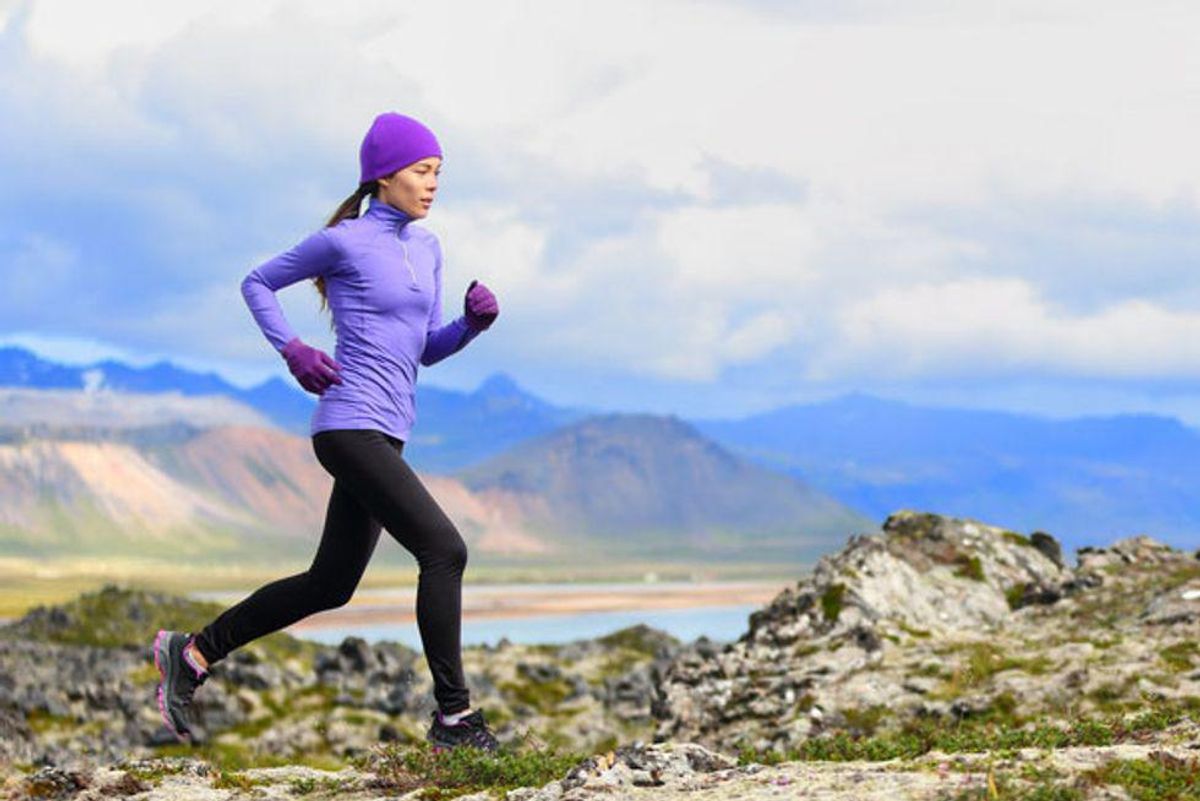Don't let cooler temps cancel your outdoor fitness routine.
Studies show that moderate exposure to sunlight can increase and enhance your mood. Plus, "People are wanting to get outdoors more, because we're cooped up inside with our jobs," says Deborah McConnell, a master trainer for LifeFitness Academy.
READ: How Exercising Outdoors Can Boost Your Workout
Whether you're training for a Tough Mudder, walking with a group of friends or tackling a group boot camp class, rock your fresh-air workout with McConnell's chilly weather workout tips.
- Check the weather conditions. Before you head out, check the temperature, winds and moisture, and factor in how long you'll be outdoors. How cold is too cold? That varies with the individual, but if the temperature dips well below zero, Mayo Clinic advises that most people should avoid exposure. People with special health conditions may want to be more cautious.
- Know the signs of hypothermia and frostbite. When it's cold, the blood flow in the body concentrates in the core, so it's important to cover your extremities—hands, feet and head—to protect them from exposure that could cause hypothermia or frostbite, McConnell says. Symptoms of frostbite include a white or grayish-yellow skin area, skin that feels unusually firm or waxy, and numbness. If you feel pain in the skin or see a change in color, get out of the cold. Signs of hypothermia, which can be even more serious, include shivering, exhaustion, confusion, fumbling hands, memory loss, slurred speech and drowsiness. If you notice signs of either frostbite or hypothermia, immediately go indoors and, if severe, seek medical attention.
- Dress in layers. When you sweat in cold weather, it's easy to get chilled as the cold air contacts the wet skin and accelerates heat loss. If you start sweating, remove a layer of clothing. Wool and some of the newer wicking synthetics are recommended for cold-weather workouts.
- Hydrate. Even when it's cold, the body loses water through sweating and respiration. For moderate exercise, drink 8 ounces of water before exercising and sip 8 to 16 ounces throughout the workout. When finished working out, replenish lost fluids with more water. With workouts lasting an hour or less, water is usually sufficient. For workouts longer than an hour, McConnell suggests a diluted sports drink (half water/half sports drink).
- Protect your skin. The sun's rays are just as strong in the cooler weather. Wear sunscreen, lip balm, and protective sunglasses—just like you would on a balmy summer day.







